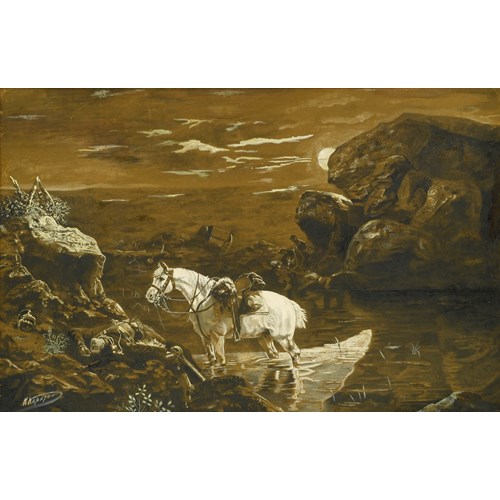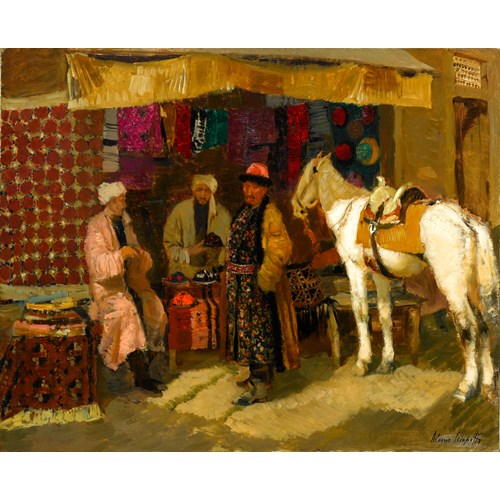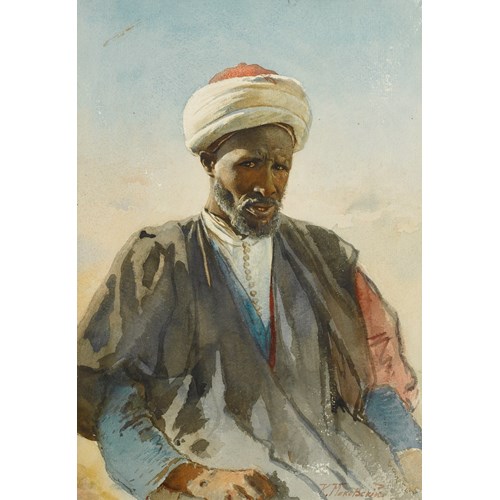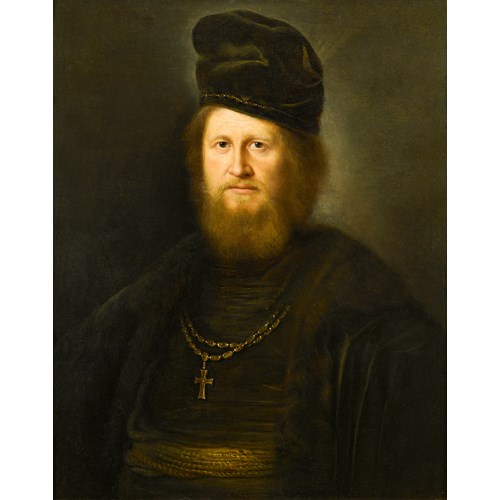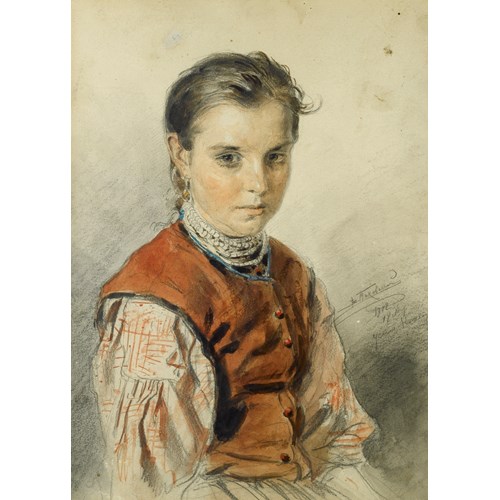Marketplace
A Bacchanale: Naked Nymphs decorating a Herm
Jean-Baptist-Marie Pierre
A Bacchanale: Naked Nymphs decorating a Herm
Period 1750-1850, 18th century
Origin France
Medium Red chalk
Dimension 22.3 x 17.8 cm (8³/₄ x 7 inches)
In Greek mythology, Maenads were the inspired and frenzied female worshippers of Dionysus, the Greek god of mystery, wine and intoxication, known to the Romans as the god Bacchus. Their name literally translates as ‘raving ones’ as the mysteries of Dionysus inspired the women to ecstatic frenzy. The Maenads were entranced women, wandering under the orgiastic spell of Dionysus through the forests and hills. They were usually pictured crowned with vine leaves, clothed in fawn-skins, carrying the thyrsus and dancing with wild abandon. The Maenads are the most significant members of the Thiasus, the retinue of Dionysus (Bacchus). The maddened Hellenic women of real life were mythologised as the mad women who were nurses of Dionysus in Nysa.
In early ancient Greece, Hermes was a phallic god of boundaries, his name, in the form herma, was applied to a wayside marker pile of stones, later with a square or rectangular pillar of stone or bronze topped by a bust of Hermes, and an erect phallus rose from the base. In the more primitive Mount Kyllini or Cyllenian herms, the standing stone or wooden pillar was simply a carved phallus. In Athens, herms were placed outside houses for good luck. This extremely delicate and refined drawing is characteristic of Jean-Baptiste Marie Pierre’s style. The high level of finish in A Bacchanal: Naked Maenads Decorating a Herm suggests it was intended as a complete work on its own, but Pierre might have made a print after it, as he did of several of his drawings.
Highly talented, Pierre was a French painter, printmaker and draughtsman. The pupil of Charles-Joseph Natoire, he studied at the Royal Academy of painting and sculpture. Pierre won the Grand Prix of painting at the Academy in 1734, which enabled him to study in Rome. He became Academician in 1742 and later became director of the Academy in 1778. He painted a ceiling in the new apartments of the Palais Royal representing The Apotheosis of Psyché. In 1754, he decorated the private theatre of the Duke of Orleans. In 1761, he was made Knight of the Order of Saint-Michel and, in 1770, he became the first painter to the King of France, replacing François Boucher. He was director of the Gobelins, and the Musée des Gobelins has many tapestries made after his cartoons. Although he painted a number of rustic genre scenes and was an occasional designer of vases and picture frames, he was principally active as a painter of large scale history and religious works. In this aspect of his output he forms a link in the eighteenth century tradition of French history painting that runs from Jean Jouvenet to the Neoclassicism of Jacques-Louis David. Pierre died on 15 May, 1789, just before the French Revolution.
M. Nicolas Lesur has kindly confirmed the attribution from a photograph and suggests a dating around 1755.
In early ancient Greece, Hermes was a phallic god of boundaries, his name, in the form herma, was applied to a wayside marker pile of stones, later with a square or rectangular pillar of stone or bronze topped by a bust of Hermes, and an erect phallus rose from the base. In the more primitive Mount Kyllini or Cyllenian herms, the standing stone or wooden pillar was simply a carved phallus. In Athens, herms were placed outside houses for good luck. This extremely delicate and refined drawing is characteristic of Jean-Baptiste Marie Pierre’s style. The high level of finish in A Bacchanal: Naked Maenads Decorating a Herm suggests it was intended as a complete work on its own, but Pierre might have made a print after it, as he did of several of his drawings.
Highly talented, Pierre was a French painter, printmaker and draughtsman. The pupil of Charles-Joseph Natoire, he studied at the Royal Academy of painting and sculpture. Pierre won the Grand Prix of painting at the Academy in 1734, which enabled him to study in Rome. He became Academician in 1742 and later became director of the Academy in 1778. He painted a ceiling in the new apartments of the Palais Royal representing The Apotheosis of Psyché. In 1754, he decorated the private theatre of the Duke of Orleans. In 1761, he was made Knight of the Order of Saint-Michel and, in 1770, he became the first painter to the King of France, replacing François Boucher. He was director of the Gobelins, and the Musée des Gobelins has many tapestries made after his cartoons. Although he painted a number of rustic genre scenes and was an occasional designer of vases and picture frames, he was principally active as a painter of large scale history and religious works. In this aspect of his output he forms a link in the eighteenth century tradition of French history painting that runs from Jean Jouvenet to the Neoclassicism of Jacques-Louis David. Pierre died on 15 May, 1789, just before the French Revolution.
M. Nicolas Lesur has kindly confirmed the attribution from a photograph and suggests a dating around 1755.
Period: 1750-1850, 18th century
Origin: France
Medium: Red chalk
Dimension: 22.3 x 17.8 cm (8³/₄ x 7 inches)
Provenance: Sale, Paris, Hôtel Drouot, Maître Ader, 29 November 1976, lot 21
More artworks from the Gallery





